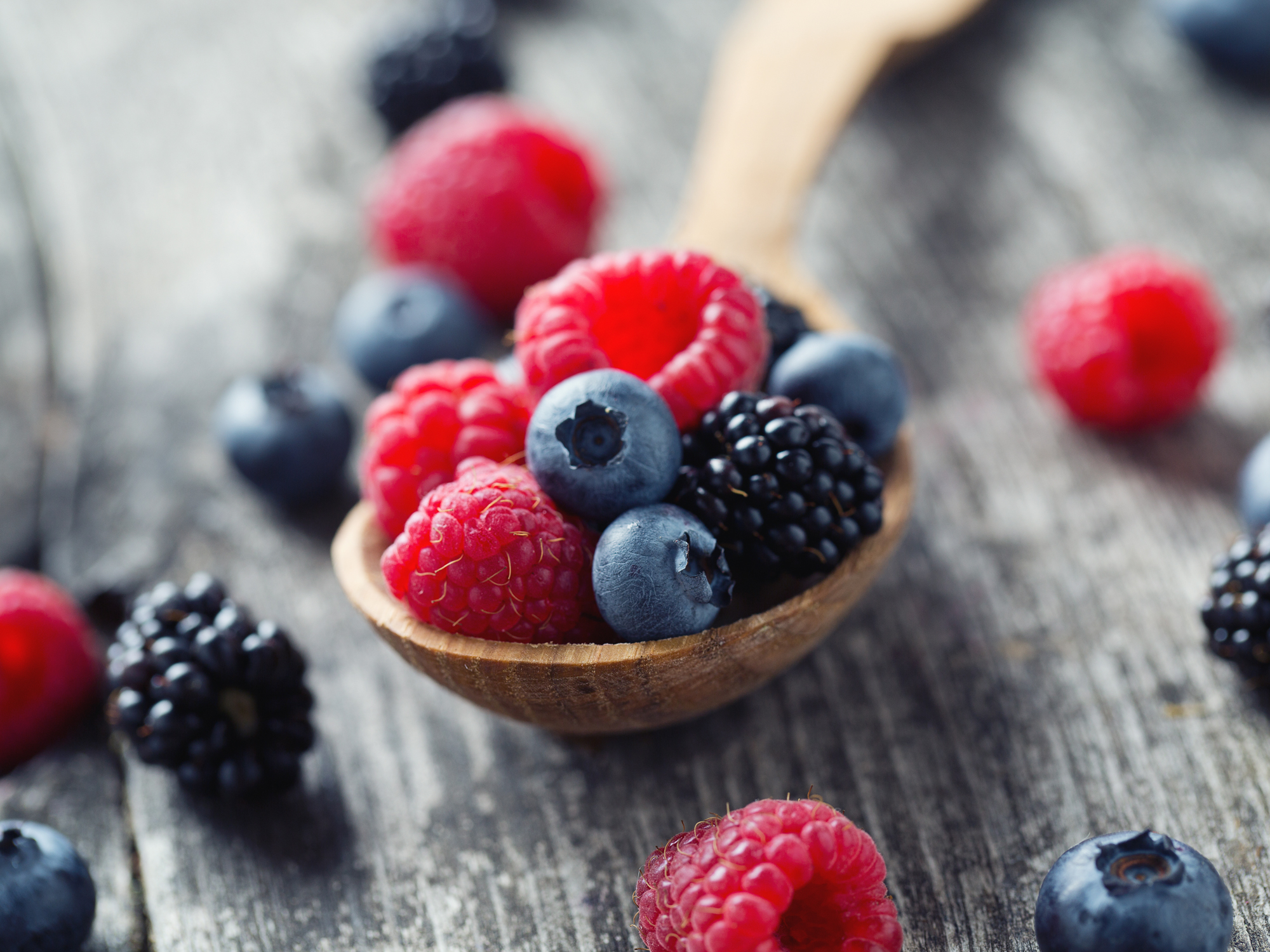Get Easy Health Digest™ in your inbox and don’t miss a thing when you subscribe today. Plus, get the free bonus report, Mother Nature’s Tips, Tricks and Remedies for Cholesterol, Blood Pressure & Blood Sugar as my way of saying welcome to the community!
Why berries are the best at fighting cancer and aging

If you’re looking for a simple way to eat healthier, without counting calories or following a bunch of crazy diet rules, here’s a healthy eating philosophy you can follow:
Make your plate look like a rainbow.
Eating naturally colorful foods (not artificially colored foods) is one of the healthiest ways to eat, because it means you’re eating tons or fresh fruits and vegetables, and you’re not overdoing the processed foods and refined grains.
It also means you’re eating a lot of a super healthy compound that gives colorful foods their vibrant hue—anthocyanins.
Anthocyanins are a flavonoid found in many fruits and veggies, but especially fruits and veggies with a rich purple, blue or red color. Berries are one of the best sources of anthocyanins, which partially explains why they’re so good for you.
In fact, a recent study shows that the anthocyanins in berries could have super healthy compound.
How anthocyanins fight cancer and aging
A new study from researchers at the University of Eastern Finland found that anthocyanins, a particularly powerful polyphenol compound in berries, impact human genes in a way that could slow aging and fight cancer.
These powerful dietary pigments boosted the function of an enzyme in cancer cells called sirtuin 6. Sirtuin enzymes impact the genes that control aging. As you get older, your body produces less of them, and scientists have long suspected that this decrease in sirtuin drives aging and age-related diseases.
So, if anthocyanins from berries bolster sirtuin production, they have serious anti-aging potential. But they also have anti-cancer potential…
Researchers found that one anthocyanin — cyanidin — switched off certain cancer genes and increased the power of a gene that suppresses tumors in colon cancer cells.
Now, this study was performed on cells in a lab, but it’s likely that those colorful berries are performing similar feats in your body. Research shows that people who eat brightly colored berries age better and are less likely to get cancer — and that’s probably because of those amazing anthocyanins.
Taste the rainbow
So, as you’re eating your rainbow-inspired diet, make sure those blue, purple and red foods are well-represented.
You can do that by eating lots of berries, like blueberries, strawberries and raspberries. But if you want to get more of the anti-cancer anthocyanin cyanidin try some less common berries too. The best sources of cyanidin are off-the-beaten path berries like wild bilberry, blackcurrant and lingonberry.
Other foods that contain anthocyanins include:
- Beets
- Purple sweet potatoes
- Pomegranates
- Red cabbage
- Black carrots
- Apples
- Plums
- Peaches
- Oranges (especially blood oranges)
- Red onions
- Radish
- Eggplant
- Black rice
You can even get berry anthocyanins in a supplement. But if you’re transforming your plate into a rainbow daily, you’re probably getting more than enough anthocyanins the old-fashioned way.
Editor’s note: Discover how to live a cancer prevention lifestyle — using foods, vitamins, minerals and herbs — as well as little-known therapies allowed in other countries but denied to you by American mainstream medicine. Click here to discover Surviving Cancer! A Comprehensive Guide to Understanding the Causes, Treatments and Big Business Behind Medicine’s Most Frightening Diagnosis!
Sources:
- Eat a Colorful Diet — RUSH. Retrieved April 12, 2018.
- New health benefits discovered in berry pigment — MedicalXpress. Retrieved April 12, 2018.
- Rahnasto-Rilla, et al. “Natural polyphenols as sirtuin 6 modulators.” — Scientific Reports, 2018.
- Berries Seem to Burst with Cancer Protection — American Institute for Cancer Research. Retrieved April 12, 2018.
- Paredes-López, et al. “Berries: improving human health and healthy aging, and promoting quality life–a review.” — Plant Foods for Human Nutrition. Sep 2010;65(3):299-308.
- Wu, et al. “Concentrations of Anthocyanins in Common Foods in the United States and Estimation of Normal Consumption.” — Journal of Agricultural and Food Chemistry. Apr. 2006, 54 (11), pp 4069–4075.












